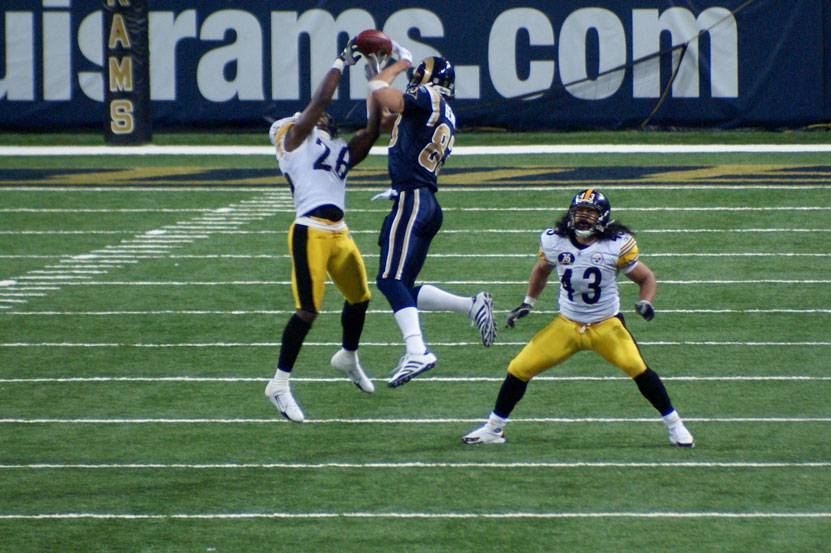Playing defensive back means living on an island one play and crashing the run the next. These athletes balance lightning‑quick footwork with heavy‑hitting toughness, all while thinking two steps ahead of the quarterback. This guide unpacks everything you need to know—without drowning you in jargon—about one of gridiron football’s most exciting positions.
What Is a Defensive Back?
Defensive backs—or “the secondary”—patrol the last line of defense. They’re usually the fastest players on the field, asked to blanket receivers and erase big plays before they spark.
The Cornerback
Corners line up outside, mirroring wide receivers stride for stride. Their prime job is to stop the pass by sticking tight in man coverage or dropping into shallow zones. A shutdown corner can force an offense to throw away from half the field.
The Safety (Free and Strong)
Safeties roam deeper. A free safety plays center field, reading the quarterback’s eyes and pouncing on overthrown balls. A strong safety rolls toward the line, filling alleys against the run and covering tight ends. Modern schemes blur the roles, so today’s safeties switch responsibilities every snap.
Nickel and Dime Specialists
When offenses spread out with three, four, or five receivers, teams add a nickelback (fifth defensive back) or dimeback (sixth). These hybrids defend quick slot receivers and blitz off the edge, giving coordinators flexibility.
Core Responsibilities
Pass Coverage Basics
Coverage breaks into man (stick to one receiver) and zone (guard an area). Corners often blend both, pressing a receiver at the snap, then sinking into a short zone if the route releases inside.
Tackling and Run Support
Even with pass prevention at the top of the job description, defensive backs can’t shy away from contact. A well‑timed tackle in space turns a potential 40‑yard gain into a modest first down.
Communication in the Secondary
Pre‑snap chatter is constant: hand signals for motion, code words for roll coverage, and quick reminders about down‑and‑distance. One blown call can allow a free touchdown, so talking is as valuable as speed.
Essential Skills and Traits
Speed and Agility
A tenth of a second lost in a sprint can be six points on the board. Lateral agility drills—ladder steps, cone weaves—sharpen cuts and breaks.
Footwork and Body Control
Smooth backpedals, quick hip flips, and balanced plant steps let a defensive back shadow receivers without grabbing.
Awareness and Ball Skills
Reading route stems, tracking the football mid‑flight, and attacking at the catch point separate good corners from elite playmakers.
Physicality and Toughness
Jamming a 6’3″ receiver or thumping a running back in the hole demands sturdy shoulders and fearless resolve.
Techniques Every Defensive Back Should Know
Press Coverage
Corners crowd the line, throwing a punch at the receiver’s chest to disrupt timing. The key is strong hands without drawing a flag.
Off Coverage
Lining up seven yards deep, the defender reads the quarterback’s drop. A quick three‑step release calls for a short break; a deeper drop signals a vertical route.
Zone Eyes and Pattern Reading
Rather than chasing one player, the defensive back scans passing lanes. Recognizing route combinations—slant‑flat, curl‑wheel—helps jump throws before they leave the quarterback’s hand.
Ball Tracking and High‑Pointing
Locating the ball early lets a defender beat the receiver to the catch point. The drill: sprint, glance, extend arms, and snatch the ball at its apex.
Open‑Field Tackling Fundamentals
Break down, keep the head up, aim for the hips, and wrap. A solo tackle in space saves touchdowns and momentum.
How the Position Has Evolved
The Era of the Shutdown Corner
In the 1990s, players like Deion Sanders erased an opponent’s top receiver, forcing offenses to adjust their entire game plan.
The Rise of Hybrid Safeties
As tight ends became faster, safeties had to cover like corners while still blitzing like linebackers. Think Troy Polamalu freelancing around the line and then sprinting 30 yards deep.
Spread Offenses and Nickel Defense
Today’s hurry‑up, spread formations line up four wideouts as a base look. In response, defenses deploy nickel packages on more than 60 percent of snaps, turning slot coverage into a starting role.
Training Tips for Aspiring Defensive Backs
Drills for Quick Feet
- W‑drills and T‑drills build directional change.
- Mirror drills pair two players; one leads, the other shadows, copying every cut.
Strength and Conditioning
Lower‑body lifts—squats, Romanian deadlifts—generate explosion out of breaks. Core work stabilizes twisting motions during high jumps.
Film Study Habits
Break down opposing receivers: release moves, preferred routes, depth tendencies. Spot down‑and‑distance clues—maybe a receiver runs a dig on every 3rd‑and‑5.
Mental Toughness and Confidence
A defensive back will surrender completions. The trick is forgetting the last play and attacking the next snap with the same swagger.
Famous Defensive Backs Who Changed the Game
Deion Sanders
“Prime Time” blended blazing speed with showmanship, scoring touchdowns on defense, offense, and special teams.
Ronnie Lott
Known for bone‑rattling hits, Lott amputated part of a finger rather than miss playoff time—a symbol of unmatched grit.
Ed Reed
A ball‑hawking free safety, Reed studied film obsessively, fooling quarterbacks into game‑changing mistakes.
Darrelle Revis
His knack for sticky man coverage coined the phrase “Revis Island,” where receivers vanished from the stat sheet.
Tyrann Mathieu
A modern hybrid, Mathieu blitzes, covers slots, and roams deep, proving versatility is the future.
Common Mistakes and How to Fix Them
Looking in the Backfield
Staring at the quarterback invites double moves. Solution: lock eyes on the receiver’s hips, then glance for the ball mid‑route.
Overuse of Hands
Excessive grabbing draws penalties. Instead, rely on footwork to stay in phase, saving the arm bar for the last five yards.
Poor Tackling Angles
Taking a high path allows cutbacks. Aim low, stay inside leverage, and force the runner toward the sideline.
The Future of the Defensive Back Position
Positionless Football
As offenses motion and swap alignments rapidly, the classic boundary‑field distinction blurs. Expect more six‑foot‑two corners who can slide to safety on third down.
Analytics and Technique Refinement
Tracking chips in shoulder pads measure acceleration, reaction time, and even heart rate after consecutive snaps. Coaches tailor drills to shave precious milliseconds off breaks.
Final Thoughts
The defensive back position tests every athletic trait—speed, agility, strength—while demanding sharp eyes and a short memory. One second you’re blanketing a receiver; the next you’re racing downhill to stonewall a sweep. Master the techniques outlined here, study film like the legends, and condition both body and mind. Do so, and you’ll flourish in the most unforgiving, electric, and ultimately rewarding role on the football field.


Leave a Reply